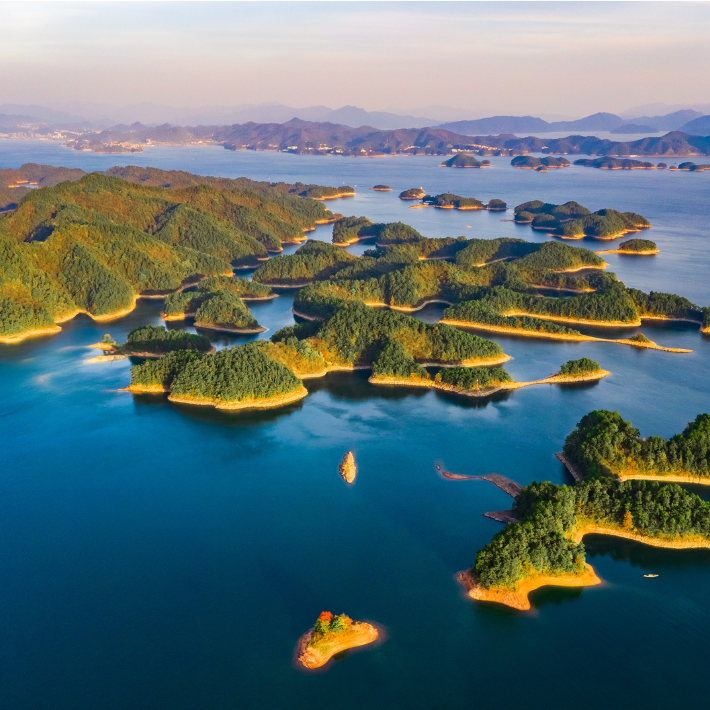
Is Food Grade Diatomaceous Earth Good for Pest Control
Discover how food grade diatomaceous earth can be a safe, eco-friendly solution for household and garden pest control. Cover everything you need to know about using food grade diatomaceous earth effectively.
Diatomaceous earth (DE) is a naturally occurring, non-toxic substance used widely for various purposes, including pest control. Derived from the fossilized remains of microscopic algae-like organisms known as diatoms, DE is composed mostly of silica. The food-grade variety of diatomaceous earth, which is purified for safe use around humans and animals, has become especially popular among those seeking safer, environmentally friendly solutions for pest control.
In this blog, we will explore the properties of food grade diatomaceous earth, how it works for pest control, its benefits, applications, and potential drawbacks. We’ll also cover safety guidelines and frequently asked questions to help you use DE effectively and safely.
What is Food Grade Diatomaceous Earth?
Diatomaceous earth is a powdery, white substance formed from the remains of ancient diatoms, which are tiny aquatic organisms with cell walls made of silica. Over millions of years, diatoms accumulated on the bottoms of oceans, rivers, and lakes, forming thick layers of diatomaceous earth deposits. These deposits are mined and refined into DE, which comes in several grades based on purity and purpose.
food grade diatomaceous earth is the purest form, consisting of at least 85% silica, with no harmful additives. It undergoes specific processing to ensure it meets safety standards set by the U.S. Food and Drug Administration (FDA), making it safe for use around humans, pets, and animals. Unlike pool-grade diatomaceous earth, which is chemically treated and contains higher levels of crystalline silica (a potentially harmful substance), food-grade DE is safer for various household applications, including pest control and even as a supplement in animal feed.
Key Differences Between Food-Grade and Pool-Grade DE:
- Food-Grade DE: Contains less than 1% crystalline silica, is safe for human and pet use, and can be used for pest control, as a food supplement, and in organic gardening.
- Pool-Grade DE: Contains a much higher percentage of crystalline silica, making it effective for water filtration but unsafe for inhalation or ingestion. This type should never be used for pest control in homes or gardens.
How Does Diatomaceous Earth Work for Pest Control?
Diatomaceous earth is a highly effective pest control tool due to its unique, physical properties rather than any toxic chemical activity. Here’s how it functions:
- Dehydration Mechanism: DE is composed of tiny, sharp-edged particles that act on an insect’s exoskeleton (the hard outer layer protecting its body). When an insect comes into contact with DE, these sharp particles attach to its exoskeleton and absorb the oils and waxes that keep it hydrated. This drying process causes the insect to lose moisture, eventually dehydrating it to death. Insects like ants, bed bugs, fleas, cockroaches, and even garden pests are highly vulnerable to this drying effect.
- Physical Abrasion: Beyond dehydration, DE’s abrasive particles create small cuts in the insect’s exoskeleton. While the cuts aren’t fatal immediately, they weaken the pest’s outer protection, making it more susceptible to environmental stress and other forms of pest control. This physical abrasion disrupts the insect’s ability to retain moisture, leading to a breakdown of its structural integrity.
- Persistence: Unlike chemical sprays, which may degrade quickly in sunlight or wash away with rain, DE remains effective as long as it stays dry. This makes it especially useful in areas where pests are likely to pass frequently, like cracks, crevices, and along baseboards. Its lasting power gives homeowners an effective, long-term option to control pest populations in a sustainable way.

Advantages of Using Food Grade Diatomaceous Earth for Pest Control
Using food grade diatomaceous earth offers a host of advantages over traditional chemical-based pest control methods:
1.Non-Toxic and Safe for Humans and Pets
Because food-grade DE is free of harmful chemicals, it offers a safer pest control option for households, especially those with children and pets. Unlike chemical pesticides, which can leave harmful residues on surfaces, DE simply breaks down into silica, a naturally occurring mineral that’s part of the earth’s crust. When used properly, DE reduces the risk of toxic exposure, making it ideal for indoor applications.
2.Environmentally Friendly
Diatomaceous earth is naturally sourced and doesn't harm the environment, unlike synthetic pesticides that can leach into the soil and water, harming ecosystems and potentially entering the food chain. DE, being a natural mineral, does not cause toxic buildup in the environment, and it doesn’t harm beneficial organisms like bees and other pollinators when used correctly.
3.Cost-Effective
Compared to chemical pest control products, diatomaceous earth is relatively inexpensive, especially when bought in bulk. Since DE has an indefinite shelf life if stored in a dry environment, it offers lasting value. With a small initial investment, households can have a long-lasting pest control tool on hand without frequent replacements.
4.Versatile
Food-grade DE can control a wide range of pests, both indoors and outdoors, making it a multi-functional product for home and garden use. From indoor invaders like cockroaches and ants to garden pests like slugs and snails, DE offers flexibility across different types of pest control needs. It also works in dry, cracked areas of soil, making it effective for garden and lawn applications.
Types of Pests Controlled by Diatomaceous Earth
Food-grade DE is effective against numerous pests, making it a go-to option for many common household and garden infestations:
1.Fleas and Ticks
Sprinkling diatomaceous earth on pet bedding, carpets, and other flea-prone areas can reduce flea and tick populations. However, it’s important to use DE safely, ensuring pets don’t inhale it or ingest large amounts. Lightly dusting areas that pets frequent is typically effective.
2.Ants
DE is highly effective for ant control. Sprinkling it along common entry points or ant trails can deter and eliminate ants without harming pets or children. DE works particularly well for more aggressive species like fire ants and carpenter ants, which can cause damage to wood structures and disrupt gardens.
3.Bed Bugs
While bed bugs are notoriously hard to eliminate, DE can be an excellent supplemental treatment. It can be dusted in areas where bed bugs hide, such as along mattress seams, in bed frames, and around baseboards. While DE alone may not completely eradicate a severe infestation, it can help reduce bed bug populations and act as a deterrent.
4.Cockroaches
Cockroaches are known for their resilience, but DE can control their numbers effectively. Applying it in kitchen areas, under appliances, and along walls where cockroaches frequent can create a barrier that kills them gradually. Since cockroaches can avoid certain areas, applying DE strategically in hiding spots is essential for effective control.
How to Apply Diatomaceous Earth for Pest Control
Correct application is key to effectively using diatomaceous earth for pest control. Here’s a step-by-step guide:
1. Identify Problem Areas: Start by locating areas where pests are most active, such as kitchen counters for ants, or cracks and crevices for cockroaches. Knowing these hotspots allows for targeted application, which increases DE’s effectiveness.
2. Apply Thin Layers: A common mistake is to apply DE in thick layers, which can make pests avoid it. Instead, apply a thin, even layer using a duster or applicator for maximum contact. The goal is to create an invisible but effective layer that pests will walk across.
3. Target Cracks and Crevices: For indoor use, focus on places pests hide or travel, like behind appliances, in cracks in walls, and around windows. For outdoor use, sprinkle it around the perimeter of the home or garden beds to prevent entry.
4. Reapply After Moisture Exposure: DE’s effectiveness decreases when wet, so it’s essential to reapply it after rain or cleaning. DE should also be reapplied after vacuuming or sweeping to maintain its effectiveness.
5. Use Safety Precautions: While food-grade DE is non-toxic, the fine powder can irritate the lungs if inhaled in large amounts. Wearing a mask during application helps reduce the risk of respiratory irritation, especially if applying in confined spaces or large areas.
Safety Considerations When Using Diatomaceous Earth
While food grade diatomaceous earth is considered safe, there are still some safety precautions to follow:
1. Avoid Inhalation
The fine particles in DE can irritate the respiratory system if inhaled. Use it in well-ventilated areas and wear a dust mask, particularly when applying it in large quantities or confined spaces.
2. Keep Away from Water Sources
DE becomes ineffective when wet, so avoid using it around damp areas, such as near sinks or in wet soil. For outdoor applications, consider reapplying after rain to maintain its pest control properties.
3. Limit Pet and Human Exposure
While safe for incidental contact, avoid direct exposure to large amounts of DE, as it can be mildly abrasive on skin and mucous membranes. For pets, avoid letting them inhale or ingest DE directly, and remove any excess powder from areas where they may lie or play.
Comparisons to Chemical Pesticides
Food-grade DE offers unique advantages over chemical pesticides, especially for eco-conscious households.
1. Efficacy Duration
Chemical pesticides may provide immediate effects, but they degrade over time and require repeated applications. DE works slower but remains effective longer, providing consistent pest control without frequent reapplication.
2. Environmental and Health Impact
Chemical pesticides can have negative environmental effects, contaminating soil and water sources and affecting non-target organisms. In contrast, DE breaks down naturally without contaminating its surroundings, making it a safer option for households with pets and children.
3. Cost Efficiency
DE is often more affordable and can be purchased in bulk for long-term use, making it an economical choice for households compared to regular chemical pesticide purchases.
Conclusion
Food grade diatomaceous earth offers an effective, eco-friendly alternative for pest control, ideal for households looking to avoid chemicals. While it requires proper application and consideration of environmental factors like moisture, its long-term effectiveness and safety make it a valuable tool in managing household pests. Whether you’re addressing an indoor insect problem or warding off garden invaders, diatomaceous earth provides a natural, non-toxic solution that can keep pests at bay without risking your family’s health or the environment.
Frequently Asked Questions (FAQs) About Diatomaceous Earth for Pest Control
Q1: Is food grade diatomaceous earth safe to use around pets?
Yes, food-grade DE is generally safe to use around pets when applied correctly. However, avoid direct inhalation or ingestion by pets.
Q2: Can DE be used in the garden?
Yes, food-grade DE is safe and effective in gardens for controlling pests without harming plants or beneficial insects if applied carefully.
Q3: How often should I reapply DE?
Reapply DE after rain or any wetting that could reduce its effectiveness. Indoors, DE lasts as long as it remains dry.
Q4: Does DE work for large infestations?
DE is most effective for mild to moderate infestations and may not suffice alone for severe infestations.









































